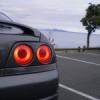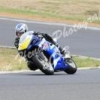Rb25 Dyno Results Summary
Announcements
-
Similar Content
-
Latest Posts
-
Bit of a pity we don't have good images of the back/front of the PCB ~ that said, I found a YT vid of a teardown to replace dicky clock switches, and got enough of a glimpse to realize this PCB is the front-end to a connected to what I'll call PCBA, and as such this is all digital on this PCB..ergo, battery voltage probably doesn't make an appearance here ; that is, I'd expect them to do something on PCBA wrt power conditioning for the adjustment/display/switch PCB.... ....given what's transpired..ie; some permutation of 12vdc on a 5vdc with or without correct polarity...would explain why the zener said "no" and exploded. The transistor Q5 (M33) is likely to be a digital switching transistor...that is, package has builtin bias resistors to ensure it saturates as soon as base threshold voltage is reached (minimal rise/fall time)....and wrt the question 'what else could've fried?' ....well, I know there's an MCU on this board (display, I/O at a guess), and you hope they isolated it from this scenario...I got my crayons out, it looks a bit like this... ...not a lot to see, or rather, everything you'd like to see disappears down a via to the other side...base drive for the transistor comes from somewhere else, what this transistor is switching is somewhere else...but the zener circuit is exclusive to all this ~ it's providing a set voltage (current limited by the 1K3 resistor R19)...and disappears somewhere else down the via I marked V out ; if the errant voltage 'jumped' the diode in the millisecond before it exploded, whatever that V out via feeds may have seen a spike... ....I'll just imagine that Q5 was switched off at the time, thus no damage should've been done....but whatever that zener feeds has to be checked... HTH
-
I think Fitmit had some, have a look on there (theyre Australian as well)
-
By soviet_merlin · Posted
Hah, fair enough! But if you learn with this one you can drive any other OEM manual. No modern luxury features like auto rev-matching or hillstart assist to give you a false sense of confidence. And a heavy car with not that much torque so it stalls easily. -
By soviet_merlin · Posted
Actually, I'd say all three are the automatic option. Just the different trim levels. The manual would be RSFS, no?
-







Recommended Posts
Create an account or sign in to comment
You need to be a member in order to leave a comment
Create an account
Sign up for a new account in our community. It's easy!
Register a new accountSign in
Already have an account? Sign in here.
Sign In Now